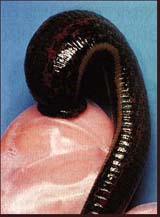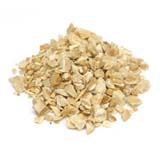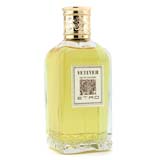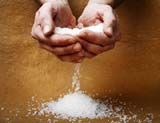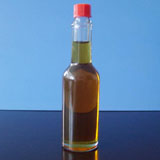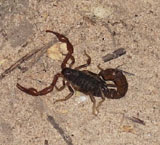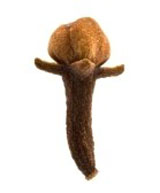Traditional healing
Common salt or sodium chloride
Editor's note
We continue this from the previous issue. In all countries there is a common knowledge concerning the use of commonly available substances to alleviate suffering. This knowledge is intuitive and empirical. It has been handed down from generation to generation. And ‘salt’ is the commonest substance. Dr. Krishnamurthy describes how multi-faceted are its uses....
Common salt or sodium chloride is the most important, most indispensable and commonest of all salty substances. This in turn comes in two principal forms — sodium chloride impure and sodium chloride as such.1. Sodium chloride impure is also called rock salt, sea salt and sodium chlorate. It is known as saindhava lavaṇa in Sanskrit; sendhalon in Hindi; sendhaluna in Gujarati; saindhavalavanam in Telugu; sendhura lavaṇa in Kannada, Marathi and Konkani; indu uppu in Tamil and intu uppu in Malayalam.
This salt is found in nature as extensive beds, usually in association with clay and calcium sulphate.
Holes dug in these strata soon become filled with salt water which then evaporates and the rock salt is leftover. Physically it occurs in the form of small white crystalline grains or transparent cubes, being a brownish-white on the inside. The taste is pure saline and when lit burns with a yellow flame.
Medicinally, it is highly carminative, stomachic and digestive. It greatly stimulates the appetite and also assists digestion although acting as a violent purgative in large doses of 1 to 2 drachms. If the dose is still larger (4 to 8 drachms) it causes vomiting.
It is prescribed in case of dyspepsia and other disorders of the stomach. During convalescence from diarrhoea, when digestion is generally weak, a mixture of rock salt and yavakṣāra sets the matter right. Heated rock salt is a good fomenter for painful and swollen regions of the body. Rock salt with a little warm water serves as an emetic and induces needed vomiting. A compound preparation called vaḍavānala cūrṇa made up of equal parts of rock salt, long pepper, pippali, cubebs, chitrak (plumbago), ginger and myrobalans (harad) all powdered together, is an excellent remedy for anorexia or tastelessness which is quite common after flatulence and biliousness. The advised dosage is 5 to 15 grains, two or three times a day and taken with water.
Cakradatta, a reputed classical Āyurvedic author, recommends the use of another compound preparation called nārikela kṣāra for dyspepsia or indigestion accompanied with pain, two to three hours after meals. This preparation is as follows — take a fresh coconut, make an opening in it, fill it with rock salt and let it dissolve in the coconut water. Then close the opening with a paste of clay and roast the entire coconut in a pit of fire. When done, break open, secure the salt within and take it along with long pepper in a dose of ¼ tolā.
Kaladana 1 gram, dry ginger 10 grams and rock salt 10 grains, all mixed together and powdered and given as a single dose, is a good laxative. Rock salt, myrobalan (harad) and long pepper powdered together is given in a dose of 10 grains, twice a day for cases of indigestion. Five parts of pancha lavaṇa, 5 parts of impure iron oxide, 4 parts of harad powdered together are very beneficial for dyspepsia and congested liver.
2. Sodium chloride or common salt or table salt. In Sanskrit this is called lavaṇa, sāmudra lavaṇa (obtained from the sea) or droṇa lavaṇa (obtained from boat-like salt basins); namak in Hindi; mith in Marathi; and uppu in Kannada, Telugu, Tamil and Malayalam.
Salt forms 2.5 percent of the waters of the ocean. This is obtained by evaporation in salt pans or basins.
Salt is the common name for the varied natural and industrial forms of sodium chloride. It is often found mixed with small quantities of many valuable elements like magnesium, calcium and potassium.
Besides its most common use in food, salt is an important industrial raw material for the heavy chemical industry and is also extensively employed in textile, paper, dyestuffs, leather, glass, ceramics, metallurgical and many other industries.
Salt is an indispensable component for nutrition and physiology. It is a universal condiment and offers an agreeable flavour and taste. It promotes digestion, cell formation and acts as a stimulant and brings about a flow of salivation. The serum of human blood has 5.5 parts per thousand by weight of salt, and which maintains the osmotic pressure of the body and keeps it in good health.
Salt is a common preservative and seasoning in meat packing, fish curing and food processing industries such as pickles. It is also added to butter, cheese, vegetables and foodstuffs of all types. Salt also has many uses in medicine. It is used for treating sprains, preventing goitre (idodised variety) and for standard intravenous injections. A salt water bath in the sea is stimulating and healthy for the skin. Salt is much used in Āyurveda, surgical procedures and veterinary practices. It is a good fertilizer for certain crops, e.g. coconut. It is germicidal and hence, a weed killer and also stabilises the soil.
Physically it occurs in the form of transparent cubes or small brownish white crystalline grains that are odourless, wholly saline in taste, soluble in water, insoluble in alcohol and chloroform.
The use and role of salt in our body mechanism are multifarious. Medicinally, it is antiseptic, anti-periodic (regulating menstrual periods), anti-helminthic (destroys of worms). It is an indispensable component of our body and has many roles in its metabolism. It keeps the globulin of blood in solution. Since it is being constantly lost from the body in the form of sweat and urine, it needs to be replenished by diet. A lack in the required quantity itself leads to disease and may even cause death. Secretion of gastric juices is increased by its use and therefore a dyspeptic patient should be careful in its use. Other people who should be careful in its use are those who are stout, patients with dropsy, those who suffer from excessive thirst and those who have skin diseases. Sea salt contains a little amount of iodine which is essential in preventing goitre and other glandular enlargement. Salt in small doses increases appetite and taste for food, promoting the secretion of digestive juices and so helping digestion. Its intake excites thirst and thus helps in the absorption of liquid food. In a diluted form, it keeps the globulins and albumins of the blood in solution. In a concentrated form, it acts as an irritant to cut surfaces and open wounds. It has a rubifacient (i.e. a reddening) action on the skin. In large doses of 2-4 drachms in solution it is an emetic; and in still larger doses, it becomes a purgative agent.
Salt is one of the constituents of the blood and body. As such, it is an indispensable component of our food. However, excessive and improper use of salt is harmful. In moderate doses it has a tonic effect, markedly visible in some convalescent patients who intensely crave for it. It is beneficially given for the dyspeptic patient and children having bilious diarrhoea. A simple remedy for an attack of indigestion is to place a pinch of salt dry on the tongue and swallowed while it is dissolving in the saliva. This will help in digesting whatever food that has just been taken, especially starchy food.
Salt also serves to reduce the amount of uric acid in the blood, especially for those whose food is too rich in either proteins or carbohydrates. It decreases the secretion of mucus, promotes absorption of effusions and gets easily eliminated in urine.
There are many specific simple and useful medicinal uses of salt. Sea water collected from a depth of five fathoms out at sea effects miraculous cures against anaemia, gastric ulcer, common cold, neuritis and neurasthenia as well as all cases of debility. Two percent of salt dissolved in water successfully causes immediate but transient vomiting. A few cases of duodenal ulcers with nausea and pain have been seen to get relief, though temporarily, by a teaspoonful of salt dissolved in a glass of cold water. Common salt is also believed to be effective against malarial fevers. The method of administration is as follows — a handful of clean salt is placed on a heated frying pan to remove all water and remains there until it turns brown. One teaspoonful of this roasted salt is the dosage for an adult. This is dissolved in hot water and given on an empty stomach, on the morning of the day of the onset of fever.
Deep sea water is used in France to improve the vitality of children. Just a salt water drink is also effective for this purpose. Taking salt water as snuff is useful for preventing influenza and is a simple household remedy for a stuffy nose. The use of salt increases leucocytosis and improves vitality. Pneumonia and chest disorders also respond well to salt water treatment. All cases of blood poisoning, as well as cases of impoverished condition of blood, are improved by oral administration of a lukewarm salt solution. If not rejected by oral administration, it is best to resort to this way of giving salt rather than through injections.
When given as an enema, salt relieves flatulence and colic pains. It destroys and expels worms from the large intestines and also prevents paroxysmal attacks of epilepsy. It cures blood vomiting and migraines. In the event of neuralgic headaches accompanied by pain along the nerves, it is taken as a snuff. A one percent salt solution is effectively applied for stopping haemorrhage from wounds, as a wash, a inhaler for the common cold and ozoena (foul smelling effusions from nose) and as a gargle in all chronic diseases of the larynx and pharynx. Salt is an antidote for poisoning by silver nitrate and the swallowing of leech. Heated salt is very commonly used as a fomentation for relief in painful swellings, joints and swollen scrofulous glands. Take a pound of powdered salt, place it in a loose bag, heat this over a fire and apply for 20 to 30 minutes at a time to secure relief in stomach pains and dyspeptic colic attacks.
Salt water (1 in 30) or bathing in the sea is advised for patients with skin afflictions, rheumatic and muscular pains and sprains. One can secure excellent relief from tired nerves with the following simple procedure — dissolve four ounces of salt in a quart of hot water and let the liquid cool down. Pour 2 ounces each of spirits of ammonia and spirits of camphor into 8 ounces of alcohol. Add this to the water prepared as above and shake well. Wet the body all over with a sponge dipped in this mixture and rub vigorously till it gets reddened. The relief obtained this way is just magical. Any worn-out feeling vanishes and “a sleepy sensation creeps over the tired nerves and one sinks away into slumber sweetly.”
Salt therapies
The use of common salt for medicinal purposes is so varied that one can think of entire therapies based on them. Some suggestions of this nature are given below:
a. Cosmetic and other applications of common salt
1. As an excellent mouthwash — dissolve one teaspoonful of salt in a glass of warm water and gargle.
2. Salt is an efficient dentifrice for rubbing and cleaning teeth. It also whitens teeth, hardens the gums and sweetens the breath.
3. Gargle with a teaspoonful of salt dissolved in a glass of hot water to relieve sore throats.
4. Tired eyes bathed in a warm saline solution of one or two teaspoonfuls of salt will provide much relief.
5. If there is any puffiness around the eyes, apply pads wrung out of a solution of a pint of hot water and one teaspoonful of salt. Lie back and relax for some time with these pads on. The puffiness will disappear and you will feel more relaxed and refreshed.
6. To secure glossy and shining hair, mix one ounce of powdered orris root (puṣkaramūla in Sanskrit, irsa in Hindi), along with half a pound of salt. The botanical name is Iris Florentina, Linn. Orris roots are available in the bazaars of Mumbai and Kolkata). Rub this well into the scalp and then brush out quickly. This application makes an effective shampoo.
7. For removing dandruff and also flakiness of the scalp, prepare a paste of 1 cup of salt and 5 tablespoons of water and rub well into the scalp. Let it remain for 5 minutes and then remove it by a brisk brushing and a shampoo.
8. When the hands have become rough, red and wrinkled by too much hard, physical labour or for any other reason, soak them for five minutes in a basin of warm water in which 3 tablespoonfuls of salt have been dissolved.
9. Similarly, when the feet are tired and aching, soak them in a warm bath of water in which a generous amount of salt has been dissolved. If the feet are excessively sore, soak them alternately in a hot saline water and comfortably hot ordinary water. Along with this, massage gently with moistened salt to remove dry skin, then rinse in cool water and dry thoroughly. Finally dust with talcum powder.
10. For a youthful facial appearance and also to clear a fading skin tan, prepare a mixture of equal portions of salt and olive oil. Gently massage the face and throat upwards with long strokes. Let the mixture remain for five minutes. Then remove with a soft cloth. Wash with mild soap and water or any mild skin lotion.
11. A general relaxation from fatigue is best secured by resting calmly for ten minutes or more in a tub of warm water in which several handfuls of salt have been added.
12. To secure relief from nervous tension and stimulate any sluggish blood circulation, relax in a warm bath for five minutes and then massage vigorously, generously using dry salt. Rinse yourself off after this in cool water.
13. Here is a Japanese way of promoting youthful health and glowing skin. Spread table or rock salt in a flattened pan. Moisten this with a mixture of alcohol, eau de Cologne and a few tablespoons of fruit juice for a pleasing colour. Let it stand for a while, stirring frequently until the alcohol and perfume evaporate into the salt. Keep in a suitable container and use as a healthy bath salt.
14. For any kind of sprains, bruises and contusions, apply a local warm fomentation by dissolving 2 tablespoons of salt in a cup of warm water, adding some vinegar as well.
15. A warm fomentation with salt alone relieves congestion and promotes better healing of ugly blemishes on the skin.
16. To help remove unsightly boils, rashes or eruptions, dissolve a tablespoon of Epsom salt and 1 tablespoon of ordinary salt in a cup of boiled water. Apply this as comfortably hot a compress as you like and as often as possible to the affected regions. This is presumed to heal as well as restore a youthful skin texture.
17. In case of nasal congestion due to cold or allergy, dissolve a few grains of fine salt in a tablespoon of warm water and pour five or six drops into the nostrils. This will ease congestion and aid in better breathing.
18. To remove unpleasant and premature blemishes on the skin, discolouration and sprains, heat coarse dry salt in a small long handled pan. Whilst still hot, carefully pour the dry salt into a piece of very heavy cloth. Carefully apply this over the affected part and let it remain there till the salt cools off. Repeat this throughout the day.
19. Bathing in hot springs is advised for good health, particularly for patients with skin diseases as the water is rich in mineral salts, especially sulphur compounds.
20. A simple measure for gaining healthy skin and a glowing youthful appearance is to soak the body in comfortably warm sea water. This enables the salt to enter into the skin through the pores and remain there. The salt will then attract and draw water, thus helping to retain moisture in the skin, ease away flaky and rough patches and also lubricate those tissues that may have fine lines of dryness.
b. Medicinal applications of various salts
I. Headaches
For ordinary headaches, place a pinch of ground saindhav salt on the tongue and take a drink of cold water. Grinding common salt to a fine degree and taking a pinch as snuff is believed to benefit all pains in the head.
II. Eye health
A beneficial collyrium for the health of the eyes is to mix 6 rattīs1 of finely ground salt in 5 tolās of rose water or saunf distillation and store in a bottle. Two drops are to be placed in the eyes morning and evening for a few days. This is also useful for redness of the eye, hazy vision, sore eyes and discharge, tearful eyes and ordinary cataract.
Grind saindhav salt to a fine degree and store in a bottle. Apply two to three collyriums of this application at bed time. This is more beneficial than the many acclaimed surmas or eye ointments. It is very useful against eye itchiness, hazy vision and inflammation of the eye. Applying a fragment of saindhav salt to the eye daily is presumed to prevent the dimming of one’s vision even in advanced old age.
III. Earache
For pain in the ear, grind 4 tolās of salt finely in 6 māṣās of water until fully dissolved, add 10 tolās of sweet oil, cook over a mild fire till the water fully evaporates, remove from the fire and allow cooling. After 2-3 days, the oil will percolate down. Keep it safe in a bottle. When necessary, warm the mixture to a comfortable degree and place a few drops in the ear. Any pain will immediately stop. Continued use of the oil is reputed to be good for deafness too. It proves beneficial even for stopping discharge from the ear.
IV. Tooth powder
Saindhav salt burnt, then powdered and stored forms an effective tooth powder that will render teeth clean, pain-free and germ-free as well as hard and white. Gargling with warm saline solution is well known to give relief against toothache.
V. Indigestion
Taking a māṣās of salt and drinking a glass of hot water over it can take care of indigestion neatly. Take 20 tolās of ghee, 5 tolās of well-ground salt, place them together in a mortar and mix well and store in a bottle. Take a tolā of this medicine, mixing it with a chatak of hot water at bedtime. This will ensure a good motion during the next morning. This is excellent for constipation and if taken a few days together, even chronic constipation will disappear.
VI. Worms
Taking 3 māṣās of finely ground salt in cow’s buttermilk and continuing for a few days together will destroy all worms in the stomach.
VII. Hiccups
Hiccups that arise for whatever reason are said to respond well to a snuff of finely ground salt.
VIII. Oedemas
Pains at the sides have a simple remedy. Prepare a packet of ground salt, float in mustard oil, heat and give a fomentation with it repeatedly on the area concerned. For all types of oedemas also, a thick application of salt ground in water will prove beneficial. Fomentation with salt will also help. In case there is an injury anywhere, but no open lesion and only pain and swelling, saline fomentation works well.
IX. Lesions
For foul smelling lesions, mix 3 māṣās of salt in a ser of water and clean the area twice a day. All vitiated elements will get washed out and the injured regions will also heal quickly.
X. Skin diseases
Salt is a good remedy for many skin diseases. Add 5 tolās of salt in ten to twelve sers of water and take your bath with that water. This will remove all itching sensations on the body. During this time, it is better to avoid applying salt water to the hair. Such bathing is also beneficial for bilious afflictions. Grind salt in water and apply this for scabies. If carried out for a few days, even chronic scabies and ringworm afflictions will get cured. It is advisable to continue this measure even after the afflictions are removed, so as to prevent any relapse. Even old warts respond well to such treatment.
XI. Abscesses
For an abscess that is not ripening and breaking, put a thick application of salt over it and tie a warm poultice of rice or gruel three times a day. The abscess will soon ripen and rupture. For cases of chilblain (bivayi), where the feet crack at the joints between the toes, take 4 tolās of bees wax, melt in hot water and then mix one tolā of ground salt with it. Melt as the occasion demands and fill in the cracks.
XII. Poisoning
Salt is presumed to be effective against all cases of poisoning, such as the toxic effect of scorpion stings and wasp bites. Grind salt finely in vinegar, first knead the affected area, then apply this salt on the area. In cases of an overdose of opium and the near risk of death, mix salt in hot water and make the patient drink it with a full stomach. This will result in vomiting; continue doing so until the poison is completely vomited out. This measure is good for cases of poisoning by datura too.
Household remedy
I. Throat inflammations
Dissolve half a teaspoon of salt in a cupful of hot water. Gargling with this solution is a good remedy for apthae or white circular sores of the mucous membrane of the mouth. Similarly, dissolve a full teaspoon of salt in hot water and gargle when the solution is still rather hot. This will heal inflammations and wounds of the throat and also mitigate pain during toothache.
II. Relief from insects
When ants or other small insects enter the ear, pour a little quantity of salt solution into it. The insects will die and it will also give considerable relief from any pain and distress.
III. Colds and catarrh
Making a habit of regularly rubbing a little salt over the body and then bathing will cure constantly recurring colds and catarrh. This also augments the blood circulation, increases one’s tolerance level and confers a power of resistance to disease. It is also effective at maintaining low blood pressure.
IV. Coughs and asthma
Keep sipping the juice of a grain of salt and a clove kept in the mouth. This will remove any phlegm or kapha in a persistent cough as well as help to counter asthma.
A simple remedy for coughs is to heat a fragment of salt well, extinguish it in water and drink that water three times a day.
V. Dressing wounds
In dressing any wound, cleaning the affected area well with a cotton swab dipped in salt solution is always beneficial as it acts as a weak carbolic acid. After cleaning the area, removing the moisture fully with a piece of cotton soaked in salt solution and squeezed dry is essential.
VI. Scorpion stings
If stung by a scorpion, apply the juice of tulasi leaves with a pinch of salt added to it to the area. This will stop the pain from the sting.
VII. Hair complaints
Washing one’s hair with some salt dissolved in water is a sure cure for dandruff and is also useful against premature hair fall.
Caution
However, using salt excessively is deleterious as a great amount of water gets collected in those indulging in this habit. They are likely to become stout and flabby and disease-prone. Patients with high blood pressure, kidney problems and skin disease should avoid consuming too much salt. Pregnant ladies suffering from swellings of the face and limbs, reduced urine, pain and distress in the belly and frequent headaches should completely stop taking salt. They should instead consume great amounts of barley water and have plenty of rest.
Bibliography
1. Nadkarni, K.M. Indian Materia Medica, Vol. I. Mumbai; Popular Prakashan Private Ltd., 1982.
2. Kirtikar, K.R., Basu, B.D. Indian Medicinal Plants, Vol. II. Dehradun; International Book Distribution, 1988.
3. Patnaik, N. The Garden of Life. New Delhi; Harper Collins Publishers, 1993.
4. Shanmugam, N.K.. Mooligai Kalai Kalanjium. Chennai; Kalaiselvi Publications, 1997.
5. Warrier, P.K. ,Nambiar, V.P., Ramankutty, C. . Indian Medicinal Plants. Chennai; Orient Longman Limited, 1996.
6. The Wealth of India. New Delhi; Publications and Information Directorate, CSIR, 1976, [Vol.X]: 171-7.
7. The Useful Plants of India. New Delhi; Publications and Informations Directorate, CSIR, 1986.
8. Bhandari, Chandraraj. Vanauṣadhī Candrodaya. Varanasi; Chaukhambha Sanskrit series, 1970.
1rattī= 1 gunza; 8 gunzas= 1 māṣā, 10 māṣās= 1 tolā=10 grams; 24 tolās= 1 ser; 1 chatak= ¼ ser
Dr. K.H. Krishnamurthy wrote about medicinal plants as used in the Indian context with deep interest.
Share with us (Comments, contributions, opinions)
When reproducing this feature, please credit NAMAH, and give the byline. Please send us cuttings.





